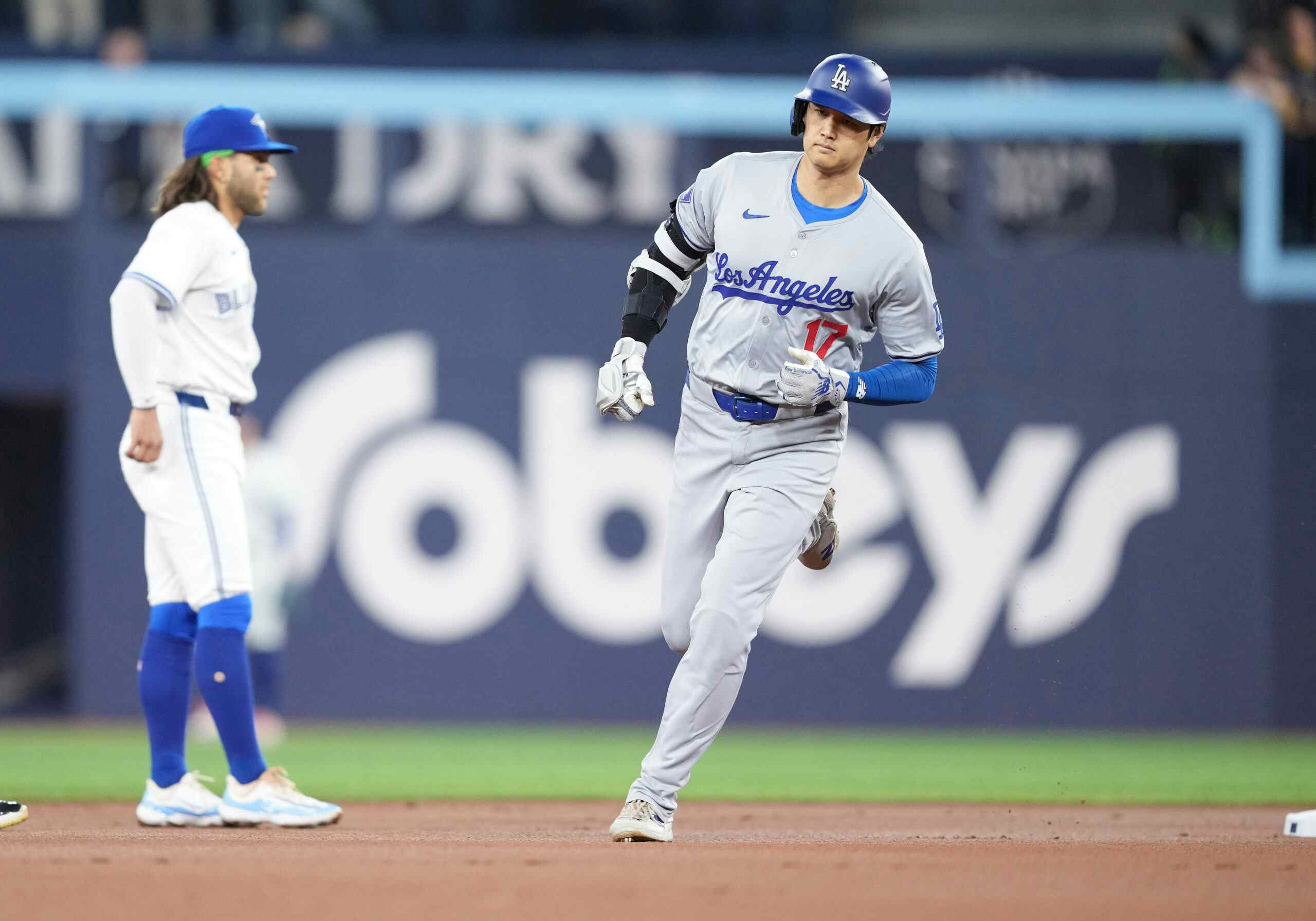Lott: Joe Biagini enters uncharted territory feeling good—want to feel him?
By John Lott
7 years ago
Photo credit: Nick Turchiaro-USA TODAY Sports
An interview with Joe Biagini is a small adventure. He rambles. His answers follow concentric circles, the radius constantly changing. As he narrows in on a cogent reply about his job, which is pitching, he can suddenly detour into a whimsical irrelevancy, which could be fingerpainting, or superheroes, or a statement of obsequious respect for the interviewer.
It takes practice to interview Biagini, and I clearly need some.
I found that out recently before the Blue Jays’ current road trip.
Biagiini has been the team’s biggest surprise, a Rule 5 draft pick that stuck, which is rare in itself, and a minor-league starter just up from Double-A who has morphed into a bullpen bulwark.
It certainly didn’t figure that a roll-of-the-dice rookie would be working in high-stakes situations in April and waving a 2.51 ERA and a 3.7 strikeout-walk ratio in the first week of September.
But pitching in September is uncharted territory in a season of uncharted territory for Biagini. Minor-league seasons typically end on Labour Day. I recall Blue Jays’ closer Roberto Osuna telling me that the extra month wore him down last year (his September-October ERA was 6.00), and wondered whether Biagini, who has now appeared in 50 games, was making adjustments to cope with the longer season.
So I ask him: In the context of workload, how are you feeling?
“Good,” he says. “Do you want to feel me?”
I decline his invitation. Then I ask whether the erratic work schedule of a reliever has required any major adjustments.
“Double-A to the big leagues is a big adjustment,” he says. “Dealing with esteemed media titans like yourself is a big adjustment. To step up my game, be on my toes …”
In that moment, Biagini stands on his toes, heightening his 6-foot-5 frame and leaving me staring at his belt buckle.
At this point, I’m thinking: Where was I?
Oh, yes, workload.
Then, a serious answer.
“You know, I feel like the way that the coaches and the whole organization have handled it with me has helped to limit the size of the adjustment,” he says. “If I just approach these games as a way to help me trust my teammates as much as possible, the catcher and the defence and the scouting reports, I think it kind of takes the pressure off me, helps me to be able to simplify.”
* * *
Biagini says pitching coach Pete Walker and bullpen coach Dane Johnson carefully monitor all of the pitchers’ workloads and make sure they get sufficient rest. In June, for example, he worked eight times in 17 days. In his eighth outing that month, he gave up four hits and two runs in one-third of an inning. The Jays gave him six days off.
But it has become increasingly difficult for manager John Gibbons to keep Biagini out of tight games when the sixth inning begs for relief. He has worked on back-to-back days nine times. Three times, he has pitched in three games over four days. Eighteen times, he has worked more than one inning.
He has inherited 20 baserunners and allowed only five to score. Remarkably, he did not allow a home run until last Saturday in Tampa Bay.
In his first season as a full-time reliever, Biagini says he gained some perspective from the since-traded Drew Storen, with whom he apparently shared certain interests aside from pitching.
“I remember talking with Storen when he was here – in between talking about our favourite superheroes and stuff – we talked about the way this coaching staff handles the bullpen,” he says. “He said, ‘You’re lucky to be in a situation like this. They do a really good job of staying aware of what guys need in terms of rest.’ He said he hadn’t experienced that everywhere he’s been. It’s a pretty nice situation.”
But for those alert for alarm bells, there is this: Biagini has allowed runs in three of his past five outings. On the other hand, his August stats included a 1.76 ERA, one walk and 12 strikeouts in 15.1 innings. Given his track record, one might put more stock into the latter than the former.
He agrees that switching from starting to relief required early adjustments. His reply to this question includes only one small slip to the shoulder of the highway as he makes one of his favourite allusions.
“It’s a matter of trying to stay specific in what you need to do every day and what you don’t need to do,” he says. “I have my routine. All the mental and physical preparation – and my fingerpainting.”
I have not actually seen Biagini fingerpainting, but it is possible, I suppose, that he does so away from the prying eyes of esteemed titans of the media.
* * *
In close games during this tight pennant race, Gibbons faces a delicate balancing act with his bullpen. He has to guard Joaquin Benoit and Jason Grilli, his seventh- and eighth-inning guys. Each is 39 years old. He has a 21-year-old closer, Roberto Osuna, who is lights-out in save situations but shaky in non-save circumstances. Then there is Biagini, upon whom Gibbons has relied to bail out the Blue Jays time and time again in the middle innings, especially when the score is close.
“He’s about to enter that extra month of the season that he’s not used to,” Gibbons says. “But he’s been tremendous.”
Unquestionably, Biagini earned his roster spot out of spring training. But as Gibbons observes, sticking with a contending club all season – and making a valuable contribution to boot – is unusual for a Rule 5 pick.
“The odds are against it,” Gibbons says. “I think it’s that much tougher when you’re on a team that’s supposed to do something. On different-type teams – rebuilding or just hoping – it’s much easier. So I thought, ‘Hey, run with it ‘til you have to do something.’ ”
So far, into the season’s sixth month, the manager has not had to adjust his use of Biagini, who says watching the preparations of the bullpen veterans has helped him govern his own routine. (Presumably, he’s on his own when it comes to fingerpainting.)
“As a starter,” he says, “I used to respect relievers a lot for being able to be the same guy out there every day, no matter how you’re feeling, no matter what inning, what type of situation it is, no matter how much rest you’ve had. I think it’s easier to have a routine as a starter. But then there are also ways to develop a kind of routine a reliever.”
One of his toughest challenges has been to ease up in his pre-game routine after periods when he has pitched a lot. He does not want to be seen as shirking his duties, but has learned when to back off, he says.
“Less is more – I’m pretty sure I coined that phrase,” he says, deadpan.
Of course, I agree that’s a new one on me.
“I feel good,” he says. “I’ve just tried to trust the process with the coaches and the trainers, and tried to annoy them and make weird jokes with them as much as possible to keep things fresh, at least for me. I don’t know if they feel the same way.”
Given the way he has pitched, of course, it hardly matters whether Biagini’s off-field act is a hit with the staff.
As we wrap up our session, the rookie shares one of the secrets of his success, and it’s clear he is not joking.
“I’m trying to stay grateful but not be intimidated,” he says. “Just trying to keep that balance.”
It seems to be working. At his best Biagini is a ground-ball machine. Compared to his mid-90s fastball, his curveball averages about 80 and his slider about 89. Both pitches have sharp downward movement, coaxing batters hit them on the ground.
“Hopefully it continues through the last stretch of the season and into the playoffs,” he says. “So far I’m feeling good. I don’t know how I’m looking, but I hope that’s good too.”
Recent articles from John Lott





